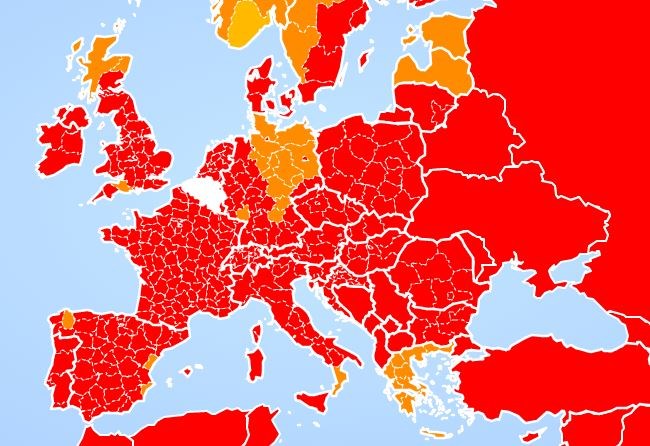Almost the entire European Union will be considered a red travel zone for Belgians from Friday, following the latest update on the website of the Foreign Affairs' Ministry.
From Friday 30 October at 4:00 PM, a number of regions and countries will colour red. Normally, this means that quarantine and/or a Covid-19 test could be imposed on travellers returning to Belgium, based on self-assessment and an analysis of the Passenger Locator Form (PLF).
However, under Belgium's new Covid-19 testing strategy, only people with symptoms will still be tested.
Unchanged since the previous update, the Spanish island of La Palma remains the only green EU zone, meaning Belgians can go there without any additional coronavirus restrictions.
From Friday, the countries of Cyprus and Lithuania will become red zones.
In Germany, the regions of Karlsruhe, Fribourg, Tübingen, Opper-Beieren, Neder-Beieren, Opper-Palts, Neder Franken, Zwaben, Hamburg, Gießen, Kassel, Weser-Ems, Münster, Detmold, Arnsberg, Koblenz, Trier, Saarland, Dresden and Chemnitz will be added to the red zones.
Related News
- 'Best-case scenario': EU could have Covid-19 vaccine by April
- Belgian surrealism: Explaining regional measures once again
- Belgian hospitals skip to last phase of Covid-19 plan as ICUs fill up
For Spain, the autonomous community of Cantabria, the provinces of Valencia, A Coruña and Pontevedra will turn red, as will the island of El Hierro. For Portugal, the region of the centre and Alentejo will also become red.
The regions of East Anglia (East of England), Surrey, East and West Sussex and Kent (South East) in the United Kingdom will also turn red.
In Denmark, the regions of Southern Denmark and North Jutland will turn red; and in Sweden, Småland and the islands, as well as South Sweden, will colour red.
For Austria, the provinces of Carinthia and Styria turn red, as will the cantons of Schaffhausen and Solothurn in Switzerland, turning both countries entirely red on the map.
In Bulgaria, the regions of North West, North Central and South Central are now also red.
The Italian regions of Marche, Puglia, Molise, Basilicata and Sicily will become red. In Croatia, the provinces of Brod-Posavina, Istria, Zadar, Primorje-Gorski Kotar, Koprivnica-Križevci and Šibenik-Knin will also be added to the red zones.
A full overview of the latest green, orange and red zones, can be found on the website of the Foreign Affairs Ministry.
Maïthé Chini
The Brussels Times

